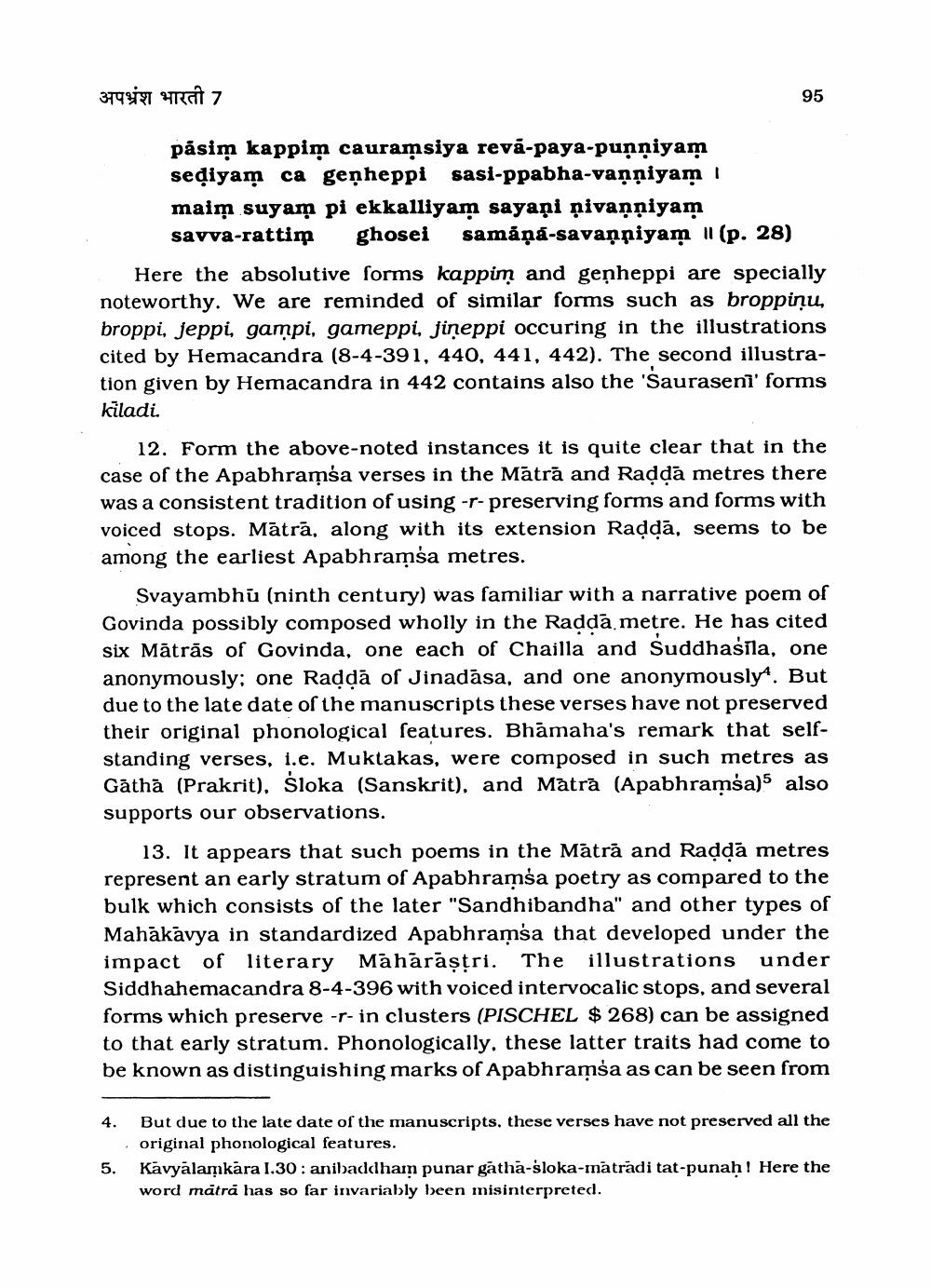________________
अपभ्रंश भारती 7
95
pásim kappim cauramsiya revá-paya-punniyam sediyam ca genheppi sasi-ppabha-vanniyam maim suyam pi ekkalliyam sayaņi ņivaņņiyam savva-rattim ghosei samaņá-savanpiyam
(p. 28)
Here the absolutive forms kappim and genheppi are specially noteworthy. We are reminded of similar forms such as broppiņu, broppi, jeppi, gampi, gameppi, jiņeppi occuring in the illustrations cited by Hemacandra (8-4-391, 440, 441, 442). The second illustration given by Hemacandra in 442 contains also the 'Sauraseni' forms kiladi.
12. Form the above-noted instances it is quite clear that in the case of the Apabhramsa verses in the Mātrā and Radda metres there was a consistent tradition of using -r- preserving forms and forms with voiced stops. Mātrā, along with its extension Radda, seems to be among the earliest Apabhramsa metres.
Svayambhū (ninth century) was familiar with a narrative poem of Govinda possibly composed wholly in the Radda metre. He has cited six Mātrās of Govinda, one each of Chailla and Suddhašīla, one anonymously; one Raddā of Jinadāsa, and one anonymously. But due to the late date of the manuscripts these verses have not preserved their original phonological features. Bhāmaha's remark that selfstanding verses, i.e. Muktakas, were composed in such metres as Gāthā (Prakrit), Sloka (Sanskrit), and Mātră (Apabhramsa)5 also supports our observations.
13. It appears that such poems in the Mătră and Radda metres represent an early stratum of Apabhramša poetry as compared to the bulk which consists of the later "Sandhibandha" and other types of Mahakavya in standardized Apabhramsa that developed under the impact of literary Māhārāștri. The illustrations under Siddhahemacandra 8-4-396 with voiced intervocalic stops, and several forms which preserve -r- in clusters (PISCHEL $ 268) can be assigned to that early stratum. Phonologically, these latter traits had come to be known as distinguishing marks of Apabhramsa as can be seen from
4. But due to the late date of the manuscripts, these verses have not preserved all the
original phonological features. 5. Kavyalamkara 1.30 : anibaddham punar gātha-sloka-matradi tat-punaḥ! Here the
word matra has so far invariably been misinterpreted.




